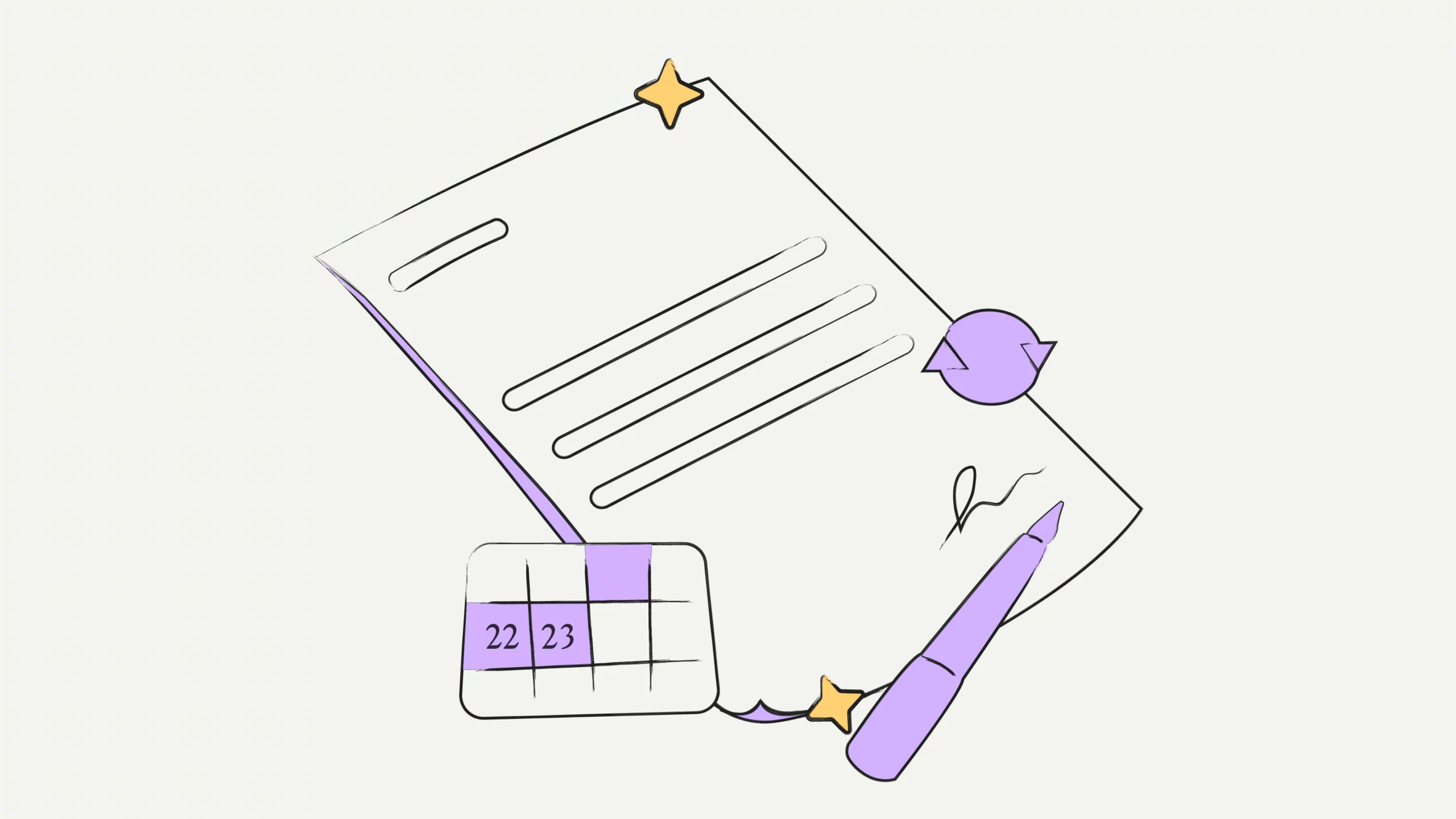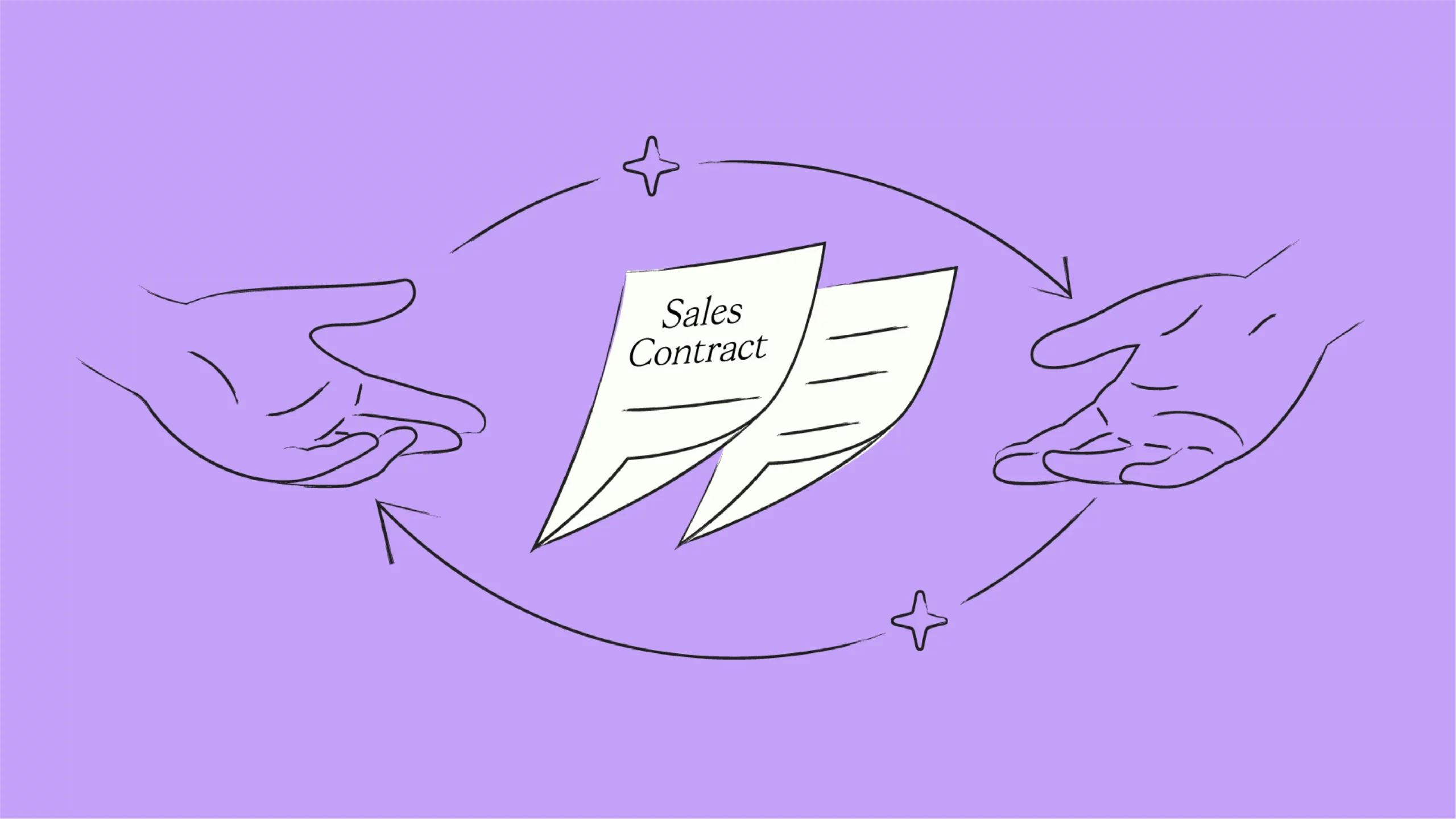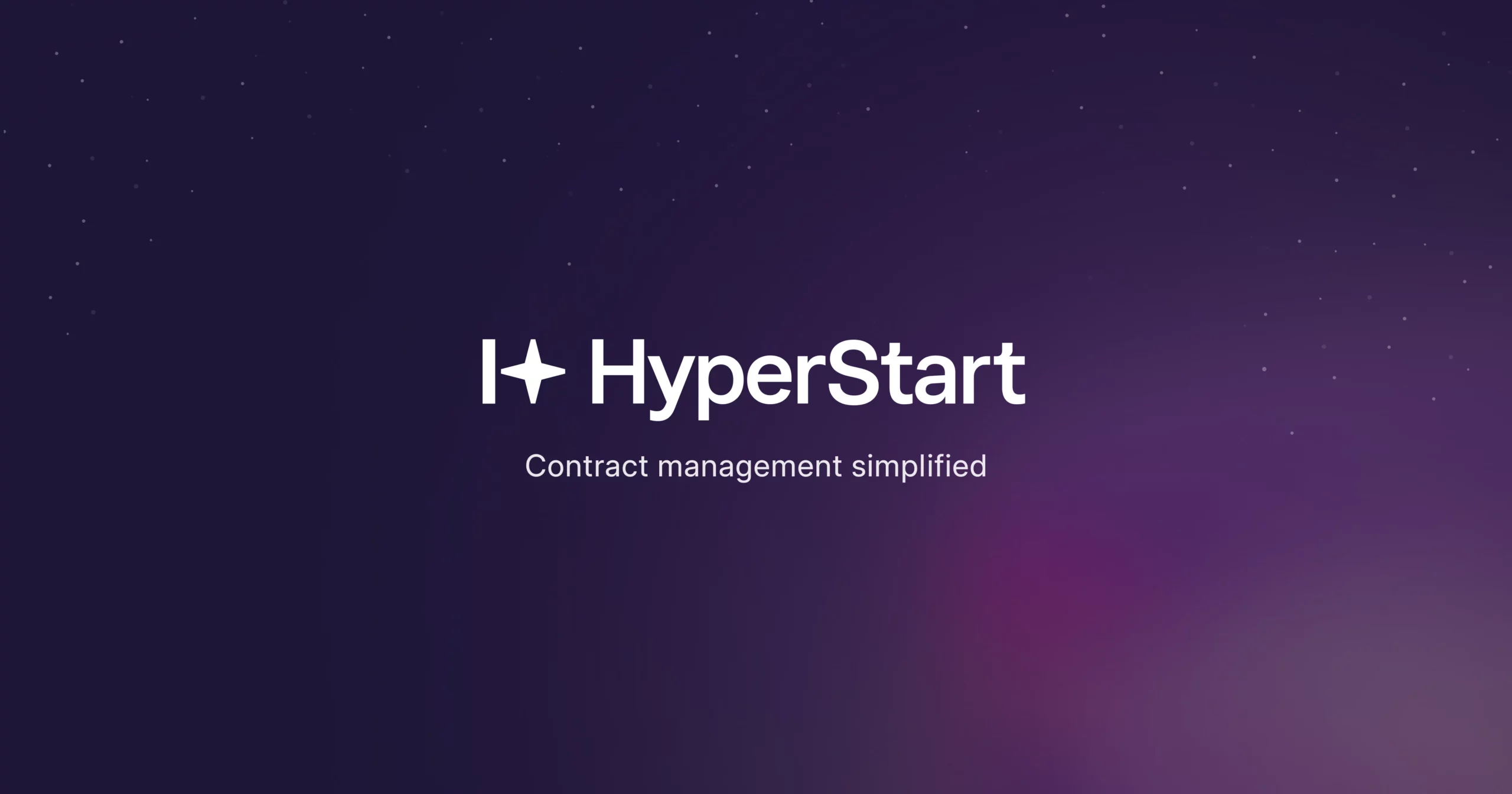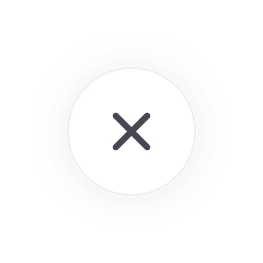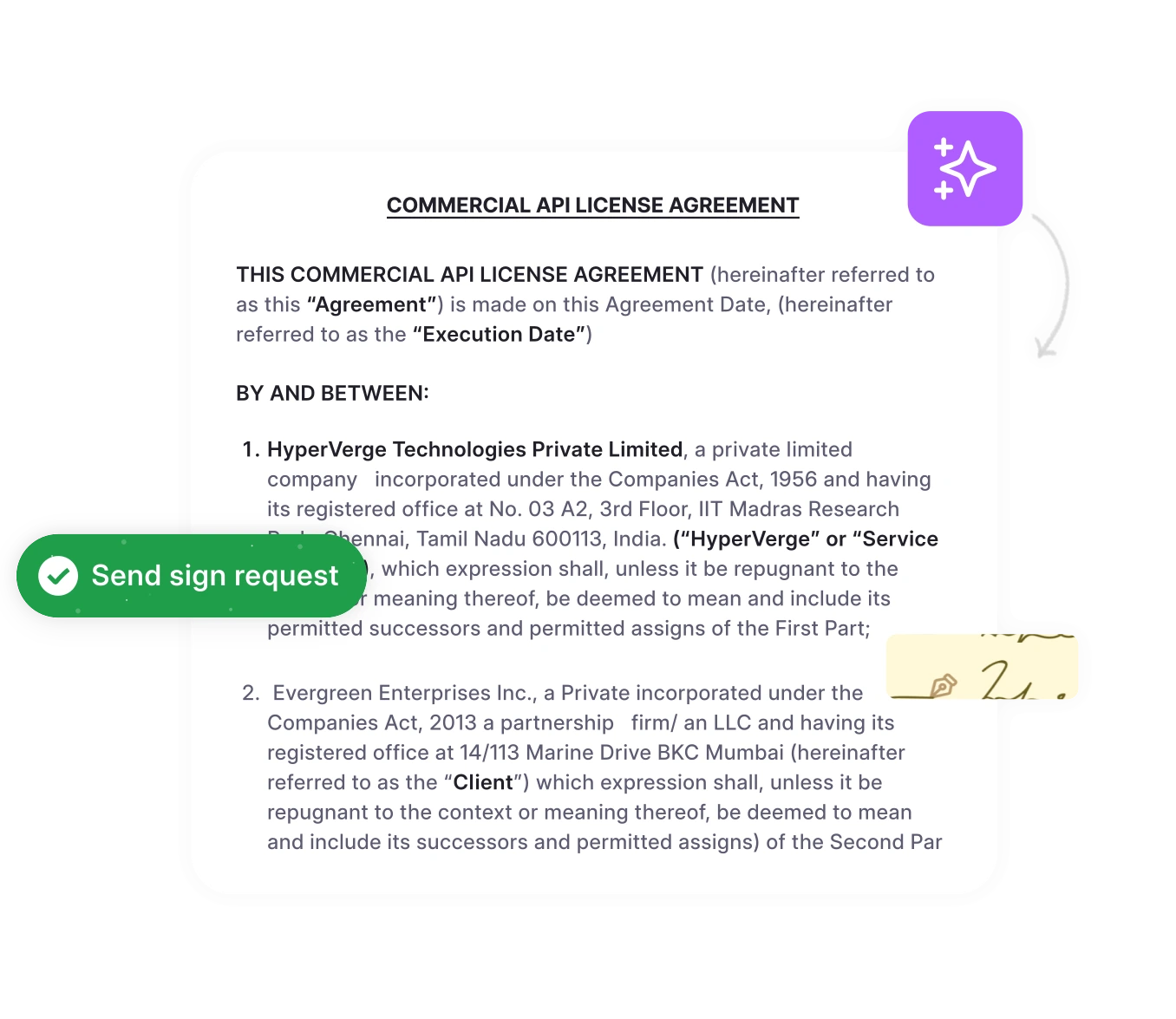All contracts come with an expiration date. While sometimes contract expiration is part of the business plan, in other cases, businesses may not want certain contracts to expire. You may want to continue your business terms with the counterparty and seek contract renewal.
As per a report by the Aberdeen Group, 56% of “best-in-class” organizations renew their contracts. These best-in-class organizations are the top 20% of brands in the market.
Renewing contracts helps refresh the business deal with the counterparty and continue the collaboration. If you too want to understand the complex landscape of contract renewals, you are at the right place.
This blog offers complete information on contract continuation and renewal. Read to learn the fundamentals, benefits, and process of renewing contracts. We have also provided strategic tips to help you manage contract renewals easily. Let’s begin.
What is a contract renewal?
Contract renewal refers to the process of refreshing or continuing an existing contract for another term. Contracts are renewed when both parties to the contract are satisfied with the previous term’s performance and want to continue business relationships.
There are two ways to renew contracts:
Adding an auto-renewal clause to the agreement, making it an making it an evergreen contract or continuing service agreement.
Proposing renewal at the end of the contract’s term.
Either way, renewal ensures the continuous validity and enforcement of the agreement. What needs to be decided is whether the renewed contract will work on the same terms as before or if it needs to be renegotiated with new terms and clauses.
A 2021 study published on Springer Link found a negative correlation between renegotiation and renewal, concluding that renegotiating a contract reduces renewal chances. Ultimately, whether or not to renegotiate renewed contacts depends on the business objectives.
Moreover, most businesses confuse contract renewal with contract extension. Extending a contract is not the same as renewing it. Here’s how:
Differences between contract renewal and contract extension
Wondering what is the difference between contract renewal and extension? Check out this table and understand the difference between the two.
| Contract renewal | Contract extension | |
| Contract terms | Renewal modifies the contract terms or pricing based on changing market demand. | Extension temporarily delays the contract expiration date without impacting other terms. |
| Renegotiations | Various clauses of the contracts like pricing, service terms, conditions, and obligations can be renegotiated during renewal. | In contract extensions, the contract’s expiration date is delayed without any amendment in other terms and clauses. |
| Relationships | Renewal is useful for maintaining business relationships with long-term partners. | Extending contracts is useful for meeting short-term contracting requirements. |
| Use case | Ideal when the contract requires considerable changes in terms, clauses, and obligations. | Best for continuing the contract under the same terms, when only a temporary extension. |
Now that you know what renewal exactly is, let’s understand the significance of renewing agreements.
Why is tracking contract renewals important?
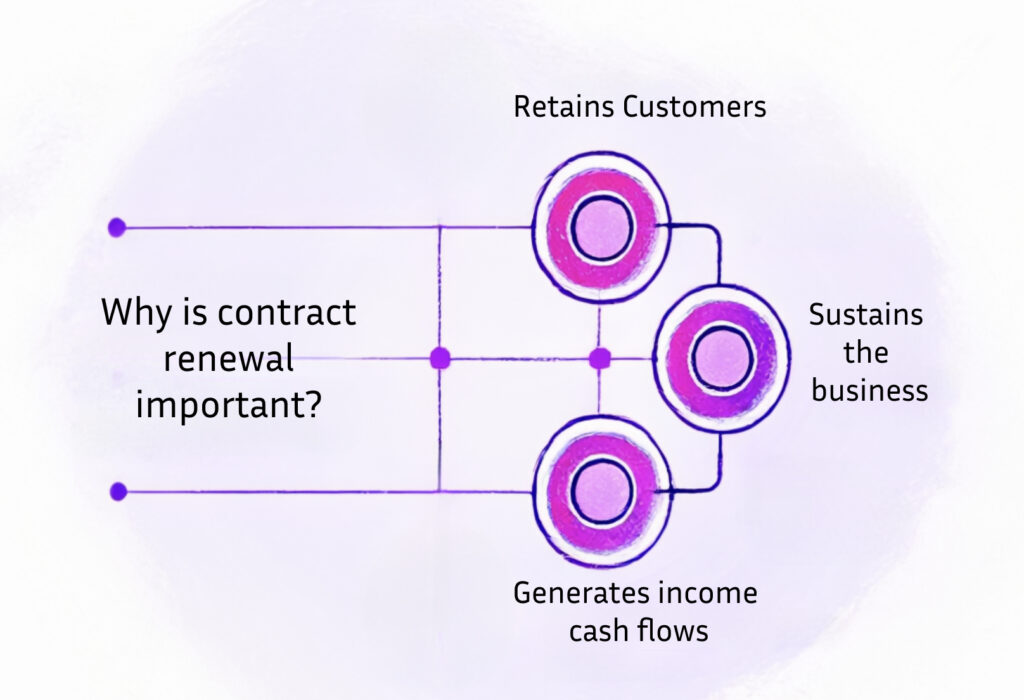
Renewal of a contract is way more than just the renegotiation and continuation of contracts. It:
1. Helps improve customer retention rates
As per a report by Forbes, there is a 60-70% chance of selling to existing customers while only a 5-20% chance of acquiring a new prospect. It signals loyalty and trust, reflects proactive engagement and reduces churn rate translating to consistent long-term revenue
A smart contract renewal strategy has automated systems to track contract expirations and send timely renewal reminders. Renewal phases are excellent opportunities for re-ups, boosting overall sales through upselling and cross-selling.
2. Sustains the business in the long run
Uninterrupted business operations give you an edge, while unanticipated contract terminations can upend the supply chain. Automated renewal tracking can help you re-negotiate terms and integrate new systems, allowing you to focus on core work without onboarding new vendors from scratch.
Renewed contracts strengthen your business relationship with counterparties, offer predictability in operations, and help plan and allocate resources better. Augmented with early renewal incentives with alerts, automating contract renewals can encourage more favorable terms and ironclad business continuity.
3. Improves incoming cash flow generation
Contract renewals are crucial to maintaining and enhancing cash flows. Predictable revenue streams allow for financial planning, budgeting, and more informed investment decisions.
4. Reduces business risks
Renewal tracking serves as an opportunity for organizations to analyze their contracts, identify unfavorable contract terms and clauses, and make decisions to amend/terminate such contracts.
During renewal review, legal teams can revisit the previous contracts’ terms and clauses. This helps identify outdated clauses, risks, threats, and other discrepancies. By identifying these risks, organizations can save themself from unfavorable auto-renewals.
5. Helps gain a competitive advantage
Competitive leverage helps maximize profits and sustain business. One way to gain this advantage is to track upcoming renewal dates.
By knowing when your contracts are up for renewal and preparing a compelling agreement for the deal, you can continue business terms with well-performing vendors. This helps maintain the preferred vendor status, thus giving you a competitive advantage in the long run.
Tracking expiration dates and renewals can help analyze customer usage patterns, spot opportunities, and negotiate better contract terms—hence helping with cost savings. The costs associated with customer retention are significantly lower than those of acquiring new customers. Regular renewals also improve CLM and reduce CAC, indicating a sustainable business model.
Step-by-step contract renewal process guide
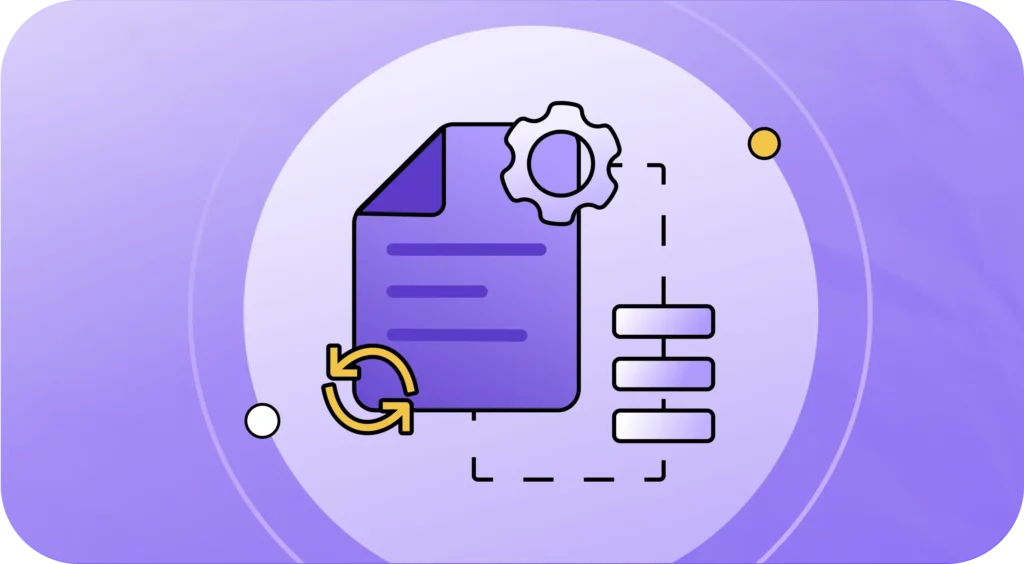
Contract renewals happen when relevant contract parties wish to continue working together. Here’s how you can renew existing contracts:
1. Initiate contract renewal
The first step is to be aware of upcoming contract expiration dates. Automated tracking of renewal dates mentioned in the contract or maintaining a record of expiring contracts. After knowing which contracts are about to expire in, let’s say, 90 days, businesses can initiate their renewal.
We recommend initiating the contract renewal process at least 90 days before the expiration date. Advanced renewal planning ensures that the new contract is ready before the previous one expires. If you need help creating a standardized document, you can refer to our contract renewal template guide.
2. Discuss contract goals
Organizations can send automatic renewal notifications to external and internal stakeholders of the contract renewal plan. These stakeholders then choose to agree or disagree with renewing contracts.
If the counterparties agree, future objectives and goals can be discussed. This is a good time to identify how the new agreement can be amended to ensure the contract aligns with the evolving business needs.
3. Renegotiate the deal
The negotiation process starts after the new contract objectives have been defined. The parties involved renegotiate the contract’s terms and clauses, and the negotiation continues until both parties’ interests are fulfilled.
One benefit of renewing an existing contract is that the relevant parties don’t have to negotiate the contract from scratch. Only the sections of the current contract that are being amended need to be renegotiated, while other clauses stay the same, which saves time.
A 2021 study published on Springer Link found a negative correlation between renegotiation and renewal, concluding that renegotiating a contract reduces renewal chances. Thus, renegotiation is a critical stage and must be handled with care to ensure contract continuity.
4. Draft a new contract
Once both parties have reached common ground for negotiation, it is time to draft a new contract. The first option is to create a new agreement reflecting all the revisions and amendments in the original agreement.
Another option is to amend the existing contract to reflect the changes made during the negotiation. Either way, this stage helps prepare a new contract for approval.
5. Approve and sign
Once drafted, it is time for contract review, approval, and signing. Here, all the parties involved in the contract sign the document and enforce it. Generally, the renewed contract comes into force once the previous one has expired.
This is the complete contract renewal process. Executing this process manually comes with many risks and challenges. The coming section highlights the common problems in manual contract renewal and their solutions.
What are the common challenges in managing agreement renewals?
Renewing a contract requires tracking each agreement’s expiration and keeping track of the obligations and performance. Only then can the contract be renewed. When done manually, contract renewal brings various challenges, such as:
- Missed expiration dates: Manually managing agreement renewal means tracking all upcoming contract expiration dates on spreadsheets and email threads. Human error and missed deadlines from manual tracking and follow-ups can incur penalties.
- Delayed renewals: Manually renewing contracts delays the contract renewal process and delays cross-sell and upsell opportunities for the business.
- Costly auto-renewals: One missed deadline can trap businesses in an expensive contract for another year. Contracts with rigid terms are harder to negotiate and renew.
These are the challenges of manual contract renewals. So, how do businesses renew their contracts efficiently? The answer is renewal tracking automation.
Introducing automation helps manage contract renewals effortlessly. With intelligent contract renewal tools, you can avoid unwanted contract termination and expiration without breaking a sweat.
The next section will discuss some key benefits of automated contract renewal tracking.
What are the benefits of automated contract renewal?
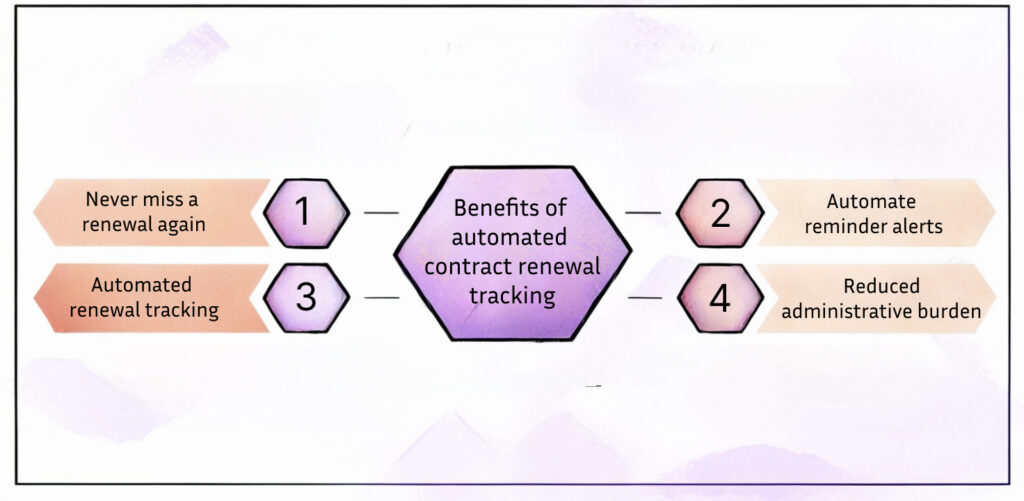
Today, contract renewal management tools like HyperStart CLM offer smart functionalities to automate renewal tracking and eliminate manual processes. These tools help maintain excellent contract performance throughout the CLM process. Here’s how:
1. Never miss a renewal again
Keeping track of the contract renewal date is a common business challenge. With thousands of contracts in the works, tracking when each contract expires is not viable. However, with automation, businesses can leverage automated reminders to track contractual obligations like expiry and renewal.
These reminders notify you whenever a contract is about to expire. Most automation tools offer a 30-day or 90-day prior notification, which gives enough time to initiate renewal and finalize a new contract before the previous one expires.
2. Automate reminder alerts
Reminder emails and alerts can be automated 30 to 90 days before the deadline to ensure you stay ahead of your milestones. This gives you enough time to cross-sell and up-sell.
3. Automated renewal tracking
What if an expensive contract renews itself automatically? You’re locked in for another year with unwarranted commitments and increased costs. Automated renewal tracking helps avoid auto-renewals for contracts that are not serving the business anymore, freeing up resources for better investments.
4. Reduced administrative burden
Automated renewal tracking replaces chore work with core work, diverting valuable time and resources to more strategic tasks.
Smart Tracking for Timely Renewals
No more renewal stress with HyperStart automated renewal tracking. Avoid costly oversights and stay ahead of schedule.
Book a DemoTop 5 Tools for Contract Renewal Automation
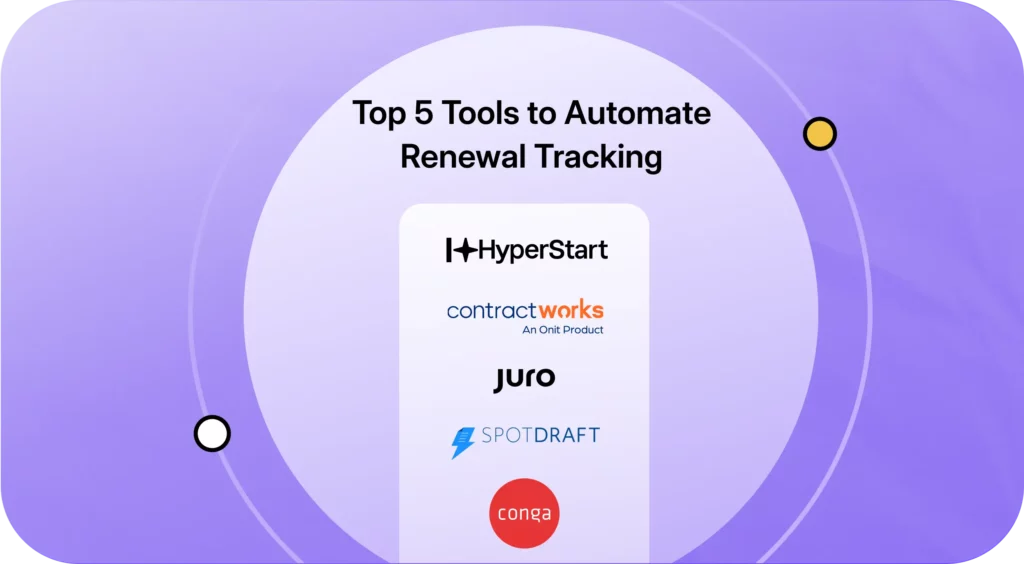
1. HyperStart CLM
See HyperStart in action 👇
HyperStart CLM is an AI-powered contract lifecycle management tool for end-to-end contract management. HyperStart AI is 99% accurate, so you leave nothing to chance.
The track feature of HyperStart CLM is excellent for automatic contract renewal tracking. With HyperStart’s contract tracking system, you never have to miss a renewal again. HyperStart CLM’s automated renewal tracking helps extract upcoming contract renewals from contract metadata and get prompt alerts for renewal.
Key functionalities of HyperStart CLM’s track feature:
Automatic metadata extraction from legacy contracts to identify and track renewal dates
Email alerts 30 or 90 days before contract expirations
Contract visibility dashboard for thorough risk analysis
Highlights of HyperStart CLM’s track feature:
2-sec
AI contract retrieval
![]()
Never miss a renewal again
80%
Less contract admin time
Get Started With HyperStart CLM And Improve Contract Renewals
HyperStart CLM is your one-stop solution for managing all stages of the contract lifecycle. Experience streamlined contract renewal management with our smart contract tracking software. Book a demo call to learn more.
2. Juro
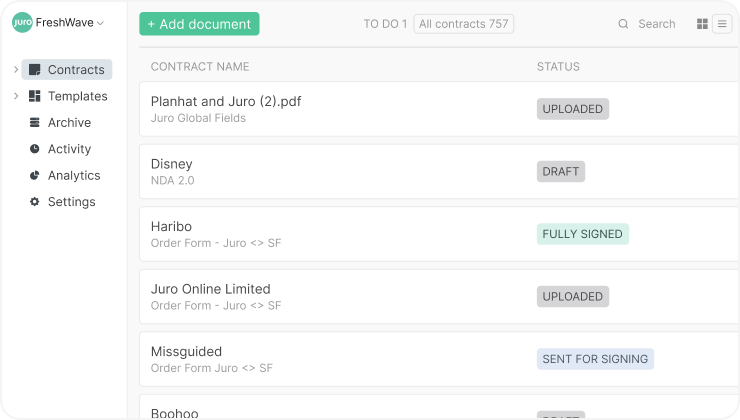
Juro helps avoid costly auto-renewals and enables businesses to easily manage contractual obligations. Use Juro to set auto-reminders and spot bottlenecks in the CLM process, aiding efficient contract renewal every step of the way.
Key functionalities of Juro:
Capture key contract dates for imported contracts and auto-tag fields.
Generate alerts ahead of contract milestones.
3. ContractWorks
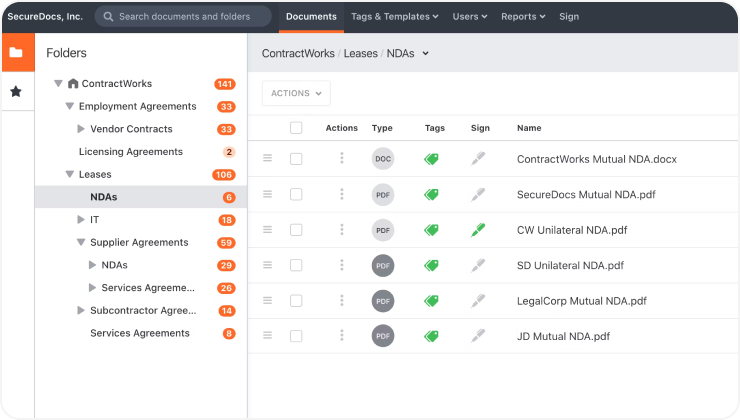
ContractWorks is an excellent CLM tool that offers complete contract tracking functionalities. It ensures that organizations never miss deadlines and keeps them ahead of contract expirations. Enriched with visibility features, this tool is great for managing agreement renewals.
Key functionalities of ContractWorks:
Add custom tags to contractual clauses to ensure optimal visibility of important terms.
Smart extraction and tagging of key contract terms, including expiry and renewal provisions.
4. SpotDraft
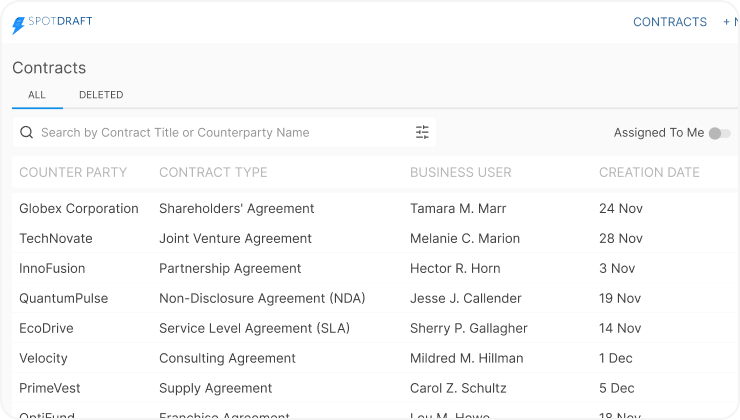
If centralized contract management is your objective, SpotDraft is a tool you must consider. This software helps keep all contracts organized and centrally stored, along with smart features to enable contract renewals.
Key functionalities of SpotDraft:
Organize and sort contracts based on renewal dates
Track upcoming renewals centrally
5. Conga CLM
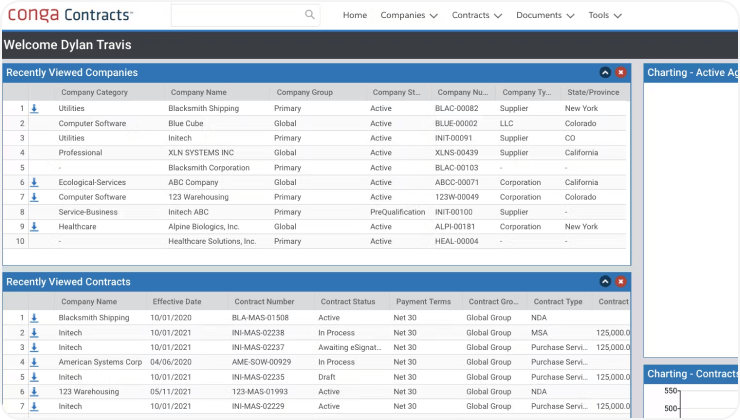
Conga CLM is a complete contract lifecycle management system for enterprise-level businesses. Conga CLM is excellent for centrally managing renewal dates of large volumes of contracts. With automated renewal functionalities, Conga CLM is great for a proactive contract renewal approach.
Key functionalities of Conga CLM:
Generate contract renewal documents in one click
Preset renewal dates and configure renewal process in workflows
These are a few tools businesses can use to automate renewal tracking and other contract processes.
Along with these tools, there are some best practices that businesses can incorporate into their renewal approach to optimize contract renewal fully. Let’s examine these best practices.
4 Best practices for contract renewals
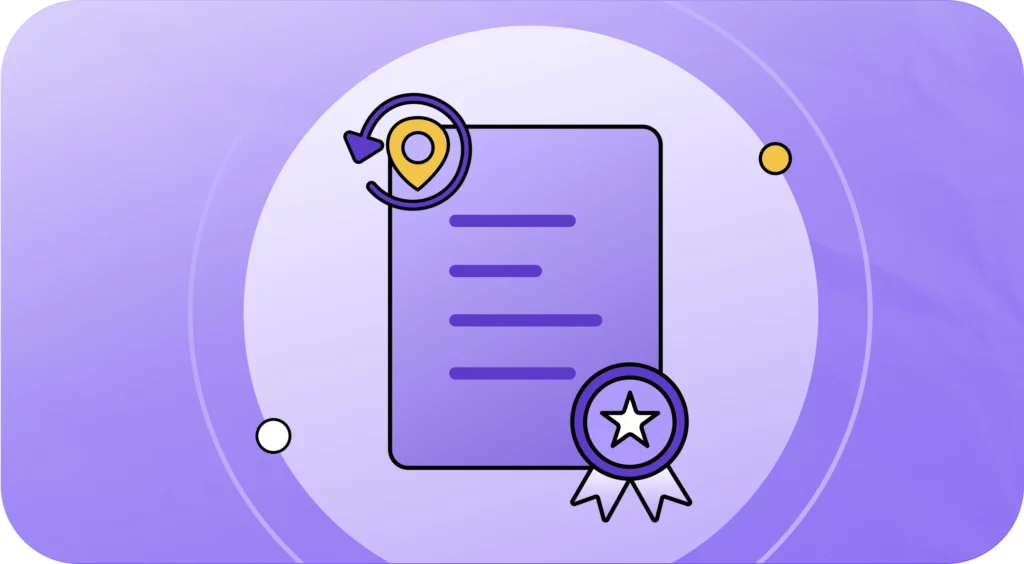
Here are some best practices for renewing a contract efficiently:
1. Begin renewal discussions ahead of time
One of the most common mistakes businesses make is waiting for the contract period to end before initiating renewal. Whether a business manually renews its contracts or uses automation, it is important to start the renewal process on time. Doing so gives sales and procurement teams the leeway to renegotiate and get contracts approved internally.
2. Use contract data for renewal decision
Contract management software offers insightful contract data on contract management KPIs, which are obligation tracking and compliance data. Use these contract performance metrics to judge the counterparty’s performance and renew contracts with counterparties that have met all the obligations and contract requirements.
3. Automate contract renewal tracking
Renewal workflows can be cumbersome. However, with AI-powered contract management tools like HyperStart CLM, brands can automate their contract renewal workflow with great precision. This can speed up contract renewal negotiations and help eliminate delays.
4. Centralize contracts and contract data
Manual tracking of contract data results in missed contract renewals. When contracts are distributed across different systems, visibility is naturally compromised. With a central contract repository to track key terms, contract administrators can track all renewal dates, in one place. This ensures optimal contract visibility and avoids missing renewals.
These are some of the best practices businesses can adopt in their contractual processes. All you need now is a powerful automation tool for contract renewal management.
Automate contract renewal tracking and management with HyperStart CLM
Contract renewals can be difficult to manage. Be it saving work time and effort or tracking renewals automatically, automation plays a key role in the process. With HyperStart CLM’s contract tracking software, you can automate contract renewal tracking effortlessly.
HyperStart CLM brings you an AI-driven contract renewal tracking system to ensure you never miss a renewal again. Book a demo call with us today to learn more about how our solution can help you reshape contract management.



